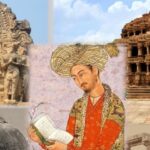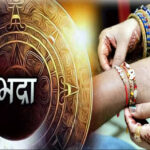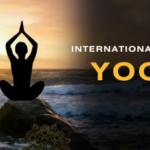Unveiling the Roots of Indian Civilization
India’s cultural tapestry is richly woven with threads that date back over 3,500 years. Among its earliest and most influential epochs is the Vedic Civilization—a period that laid the foundations of Indian philosophy, social structure, spirituality, and even governance.
But what exactly is the Vedic Civilization? Was it a myth, a historical reality, or a mix of both? Let’s delve into its origins, separate fact from fiction, and understand how it still shapes modern India.
What is the Vedic Civilization?
The term “Vedic Civilization” refers to the period in Indian history when the Vedas—the oldest sacred texts of Hinduism—were composed and orally transmitted. It spans roughly from 1500 BCE to 500 BCE, overlapping with and succeeding the Indus Valley Civilization.
The people of this era were known as Aryans, a group believed to have migrated into the Indian subcontinent from Central Asia. They brought with them new languages (early Sanskrit), rituals, and social structures, forming the basis of Vedic culture.
The Four Vedas: Spiritual and Cultural Cornerstones
The Vedas are the sacred scriptures of Hinduism and represent the heart of the Vedic Civilization. These include:
Rigveda – The oldest and most important, containing hymns to various deities.
Samaveda – Liturgical texts used for rituals and chants.
Yajurveda – Instructions for performing sacrificial rituals.
Atharvaveda – A mix of magic, healing practices, and philosophical ideas.
These texts are not just religious scriptures but also anthropological documents, shedding light on the society, beliefs, and science of ancient India.
Social Order: The Origins of Varna and Caste
One of the most debated aspects of the Vedic Civilization is its social structure. The early Vedic period followed a flexible system of Varna, where:
Brahmins were priests and scholars
Kshatriyas were warriors and rulers
Vaishyas were traders and agriculturists
Shudras were service providers
Initially, this classification was based on profession and merit, not birth. However, during the Later Vedic Period, it began solidifying into a hereditary caste system, laying the groundwork for the jati-based social divisions seen in later Indian history.
Governance and Society in the Vedic Era
The Vedic society was primarily rural and pastoral, with tribes (known as Janas) led by chieftains (Rajas). Decision-making was often collective, involving tribal assemblies like:
Sabha – Council of elders
Samiti – Popular assembly
These institutions are seen as early forms of democratic governance, which were later formalized in republican states (Mahajanapadas).
Gender Roles in the Vedic Civilization
Contrary to later patriarchal structures, women in early Vedic society enjoyed relatively high status. They:
Participated in yajnas (rituals)
Composed hymns (e.g., Lopamudra, Ghosha)
Had access to education (gurukuls)
However, this declined over time, and by the Later Vedic Period, women’s rights and roles had significantly reduced.
Economy and Livelihood: Cattle, Agriculture, and Trade
The economy of the Vedic age revolved around:
Cattle rearing: Cows were a measure of wealth.
Agriculture: Use of iron tools (after 1000 BCE) improved farming.
Barter trade: Coins like Nishka and Satamana emerged later.
This agrarian base contributed to settled life and the rise of urban centers in the post-Vedic period.
Religion and Philosophy: The Vedic Worldview
Vedic religion was polytheistic, with gods representing natural forces:
Agni (Fire)
Indra (Rain and War)
Varuna (Cosmic Order)
Soma (Ritual Drink)
Over time, philosophical speculation grew. This gave birth to Upanishads, emphasizing:
Brahman (universal soul)
Atman (individual soul)
Karma, Rebirth, and Moksha
This transition from ritualism to spiritual introspection influenced all major Indian religions—Hinduism, Buddhism, and Jainism.
Myths vs. Facts: Debunking Common Misconceptions
Let’s clarify a few common myths about the Vedic Civilization:
| Myth | Fact |
|---|---|
| Vedic Civilization was purely mythological | Archaeological and linguistic evidence supports its historical basis |
| Aryans destroyed the Indus Valley Civilization | No concrete evidence of a violent invasion; decline was likely due to environmental changes |
| Vedas promote caste-based oppression | Original Varna system was based on skill, not birth |
| Women had no rights in Vedic times | Early Vedic texts show women as educated and respected |
Influence of Vedic Civilization on Modern India
The legacy of the Vedic age continues to shape modern India in various dimensions:
Spiritual and Religious Influence
Mantras, yajnas, and temple rituals are Vedic in origin.
Concepts like Dharma, Karma, Moksha still guide Indian spiritual life.
Modern Yoga philosophy draws from Vedic and Upanishadic teachings.
Educational Traditions
The gurukul system inspired today’s residential schools and holistic education.
Emphasis on oral learning, memory, and recitation continues in traditional schools (pathshalas).
Social Structures and Challenges
The caste system in its current rigid form has evolved from the earlier Varna system.
While reformed and legally abolished, caste continues to influence Indian society and politics.
Philosophy and Governance
The Vedic tradition of dialogue and debate inspired later intellectual traditions like Nyaya (logic) and Samkhya (enumeration).
Concepts of righteous governance (Raj Dharma) are still quoted in Indian legal and political discourse.
Relevance in the 21st Century
In the digital age, Vedic knowledge is being rediscovered and reinterpreted:
AI and Sanskrit: Vedic Sanskrit is being explored for its structured grammar in computational linguistics.
Ayurveda and Vedic sciences: Revival of holistic health systems rooted in Vedic texts.
Vedic Astrology (Jyotish): Still a popular part of Indian cultural life.
Conclusion: A Civilization That Still Breathes
The Vedic Civilization is not just a chapter in history books—it’s a living tradition. From chants in temples to principles in daily life, its influence can be seen and felt across India. While many myths cloud our understanding of the era, historical research and spiritual inquiry continue to unravel its truth.
In embracing both facts and faith, India continues to draw strength from its Vedic roots while moving forward into the future.
FAQs About the Vedic Civilization
Q1: Was the Vedic Civilization before or after the Indus Valley Civilization?
A1: It came after. The Indus Valley declined around 1900 BCE, while the Vedic period started around 1500 BCE.
Q2: Are the Aryans indigenous to India?
A2: Scholars differ. Some say Aryans migrated from Central Asia (Aryan Migration Theory), while others argue for indigenous origins.
Q3: What is the biggest contribution of the Vedic Civilization?
A3: The Vedas themselves—foundational texts of Indian religion, philosophy, and society.
Q4: Are there any remains or archaeological sites linked to the Vedic Civilization?
A4: The Vedic culture was more rural and less urban than the Indus Valley, so fewer cities survive. However, sites like Hastinapur and Kurukshetra are linked to later Vedic texts.
Stay in Touch
Are you fascinated by India’s ancient past? Subscribe to our newsletter for weekly insights into Indian history, culture, and spirituality.
Related posts:
 Baburnama vs The Temple Destroyer King: Myths, Facts, and Historical Realities
Baburnama vs The Temple Destroyer King: Myths, Facts, and Historical Realities
 Bhadra’s Unique Influence on Raksha Bandhan 2023
Bhadra’s Unique Influence on Raksha Bandhan 2023
 Holi and Its Mythological Significance: A Century of Celebrations in India
Holi and Its Mythological Significance: A Century of Celebrations in India
 Hindu Dharma in the Modern Age: Navigating Tradition and Transformation
Hindu Dharma in the Modern Age: Navigating Tradition and Transformation
 Valentine’s Day: History, Significance, and Modern Perspective
Valentine’s Day: History, Significance, and Modern Perspective
 Yoga for a Stress-Free Life: An Ancient Solution for Modern Lifestyle
Yoga for a Stress-Free Life: An Ancient Solution for Modern Lifestyle
